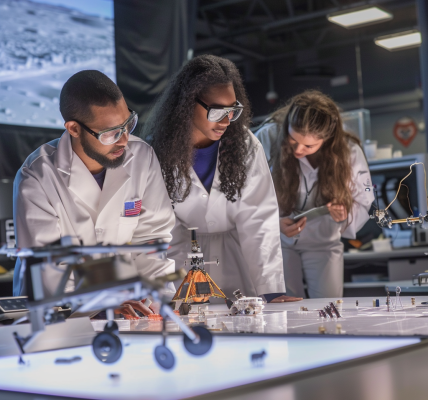As the countdown to the year 2030 begins, the commercial space industry is gearing up for a significant transition in low-Earth orbit (LEO) operations, particularly concerning the future of the International Space Station (ISS). With the ISS nearing the end of its operational lifespan, NASA and various commercial entities are actively preparing for the eventual replacement of this iconic space laboratory.
Leading the charge are companies such as Axiom Space and VAST, both of which have initiated the construction of their respective commercial space stations. These ventures signify a pivotal shift in how human spaceflight and research will be conducted in the coming years. The urgency of this development stems from the pressing need to ensure that the scientific and research functions currently performed by the ISS continue unabated.
Recent announcements from VAST highlight the ambitious plans for its inaugural space station, set to launch next year, alongside a follow-up station that promises to expand commercial capabilities in orbit. Axiom Space, on the other hand, has made adjustments to its station design, reflecting the dynamic nature of this rapidly evolving industry. Other notable players in the market, including Blue Origin and Voyager Space, are also exploring their own station concepts, though the future of these projects remains uncertain.
NASA’s Commercial LEO Destinations (CLD) program plays a crucial role in facilitating the development of these commercial stations. By providing support and resources, NASA aims to cultivate a thriving market for LEO operations, where it can act as a customer rather than the sole operator. This strategic shift is reminiscent of former NASA Administrator Jim Bridenstine’s vision of transforming NASA into ‘one of many customers’ in the commercial space sector.
Under the auspices of the CLD program, Axiom Space was awarded a significant contract in February 2020, valued at a maximum of $140 million. This contract aimed to integrate at least one habitable commercial module into the ISS, marking a substantial step in the collaboration between NASA and commercial enterprises. This partnership was part of NASA’s Next Space Technologies for Exploration Partnerships (NextSTEP) initiative, which laid the groundwork for the current CLD program established in March 2021.
The CLD program is designed to foster the creation of commercial space stations in LEO, emphasizing NASA’s role as a customer rather than a direct operator. This shift follows the successful implementation of the Commercial Crew Program and Commercial Resupply Services programs, which have effectively managed crew rotations and cargo deliveries to the ISS.
In December 2021, three teams were selected during the initial phase of the CLD program, each receiving substantial funding to develop their respective station concepts. A consortium led by Blue Origin, which includes industry giants such as Sierra Space, Boeing, and Redwire, was awarded a funded Space Act Agreement (SAA) worth $130 million to bring its Orbital Reef concept to fruition.
Meanwhile, Voyager Space, in collaboration with Nanoracks and Lockheed Martin, secured $160 million to advance the Starlab concept, further diversifying the array of commercial offerings in LEO. Additionally, Northrop Grumman and Dynetics received $125.6 million to develop their own station concept, showcasing the competitive landscape of commercial space stations.
As these companies forge ahead with their plans, questions linger regarding the viability of the commercial market for human space stations. The success of these ventures will largely depend on the demand for research capabilities in LEO and the ability of these companies to attract customers, including government entities and private organizations.
The implications of these developments extend beyond mere commercial interests; they represent a significant evolution in humanity’s exploration and utilization of space. With the ISS serving as a cornerstone for international collaboration in space research, its eventual replacement by commercial stations could redefine how scientific endeavors are conducted in orbit.
As the industry continues to evolve, stakeholders are closely monitoring the progress of these commercial space stations. The potential for innovation and new scientific discoveries hinges on the successful establishment of these platforms, which will serve as the next generation of research facilities in low-Earth orbit.
In summary, the commercial space industry is on the brink of a transformative era as it prepares for the replacement of the ISS. With multiple companies racing to establish their own stations, the landscape of human spaceflight is set to change dramatically, ushering in new opportunities for research and collaboration in the final frontier.





